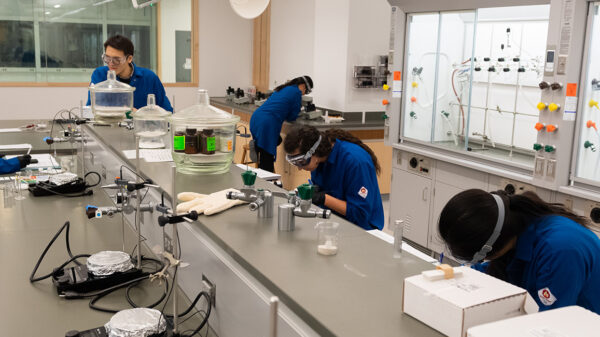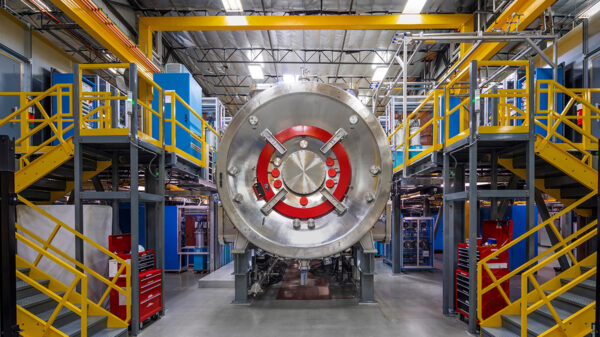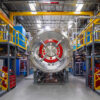Stellaria, a French startup spun out of the CEA and Schneider Electric, has raised €23 million (around USD$26.88 million) to build a radically different nuclear reactor.
This latest round brings Stellaria’s total funding to €33 million, which includes €10 million from the France 2030 program.
Announced on Friday, the company is developing the Stellarium, a fourth-generation molten salt reactor powered by fast neutrons. Unlike conventional reactors, it uses liquid fuel made from chloride salts and operates in a closed fuel cycle. The design aims to destroy more long-lived nuclear waste than it creates—something no commercial reactor has ever achieved.
Stellaria intends to initiate its first fission reaction by 2029. By 2035, it hopes to deploy its first commercial unit. The new funding will support technical and regulatory steps, including submitting a Demande d’Autorisation de Création (DAC) for its Installation Nucléaire de Base (INB).
The startup also plans to double its workforce, scale up its research center in Grenoble, and grow its scientific partnerships. U.S.-based At One Ventures and France’s Supernova Invest led the round. Existing backers—CEA Investissement, Schneider Electric, Exergon, and Technip Energies—also contributed.
Rather than attempting sweeping innovation, Stellaria has focused on selective breakthroughs. It has minimized complexity to accelerate deployment. Key features include natural convection for passive cooling, a self-sustaining fuel cycle through isogeneration, and four physical containment barriers—one more than typical reactors.
In addition, the Stellarium can operate for more than 20 years without refueling. Its energy density is reportedly 70 million times greater than lithium-ion batteries.
Read more: Japan launches new experimental nuclear fusion reactor
Read more: Type One Energy to construct a prototype nuclear fusion reactor in Tennessee
Several other companies are looking into nuclear fusion
According to Stellaria, a single reactor could power a city of 400,000 people. As a result, it offers a feasible replacement for fossil fuel infrastructure in heavy industry.
François Breniaux of Supernova Invest said the Stellarium’s design offers long-term price stability and reliable power for electro-intensive industries. Industrial partners Technip Energies and Schneider Electric have pledged long-term support to help scale the design. Stellaria will also build an industrial demonstrator to validate its performance.
Exergon’s Giuseppe Sangiovanni noted Stellaria’s significant progress since its seed round. He said the technology is well-positioned to serve growing demand for dispatchable, low-carbon electricity in Europe and globally.
Founded in 2023, Stellaria aims to support reindustrialization with a clean, scalable, and resilient form of nuclear energy built for the 21st century.
While Stellaria pushes fission in a new direction, several other companies and institutions are advancing nuclear fusion. These projects aim to replicate the process that powers the sun, offering nearly limitless clean energy.
The tokamak design—best exemplified by the international ITER project in southern France—remains the most heavily funded approach. ITER, a collaboration among 35 nations, is building a massive doughnut-shaped reactor that uses magnetic fields to contain superheated plasma. Its goal is to produce ten times more energy than it consumes.
Private startups are also active in this space. Commonwealth Fusion Systems, a spinout from MIT, is developing a compact tokamak called SPARC. The company hopes to deliver net energy gain and move toward commercialization in the 2030s.
Read more: Trump tariffs complicate its own case for nuclear renaissance
Read more: NevGold finds high-grade gold underneath the surface at Nutmeg Mountain
Jeff Bezos backed company tests magnetized target fusion
Alternatively, the stellarator design—used in Germany’s Wendelstein 7-X reactor—offers improved plasma stability at the cost of greater engineering complexity. Researchers at the Max Planck Institute for Plasma Physics lead this work. In Japan, the National Institute for Fusion Science operates the Large Helical Device, another stellarator pushing toward longer plasma pulses.
Other fusion startups include TAE Technologies in California, which uses beam-driven field-reversed configurations, and Canada’s General Fusion, backed by Jeff Bezos, which is testing magnetized target fusion.
Together, these efforts represent a global race to unlock the next generation of nuclear energy—one that complements the kind of low-waste, high-density fission reactors Stellaria is building.
.
joseph@mugglehead.com














